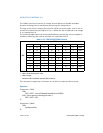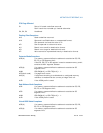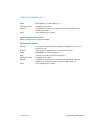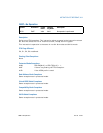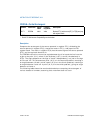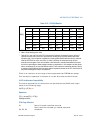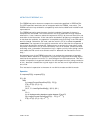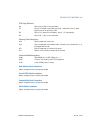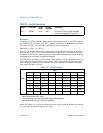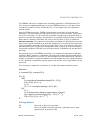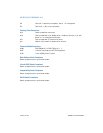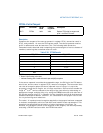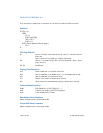
3-360 Vol. 2A FPREM—Partial Remainder
INSTRUCTION SET REFERENCE, A-M
The FPREM instruction does not compute the remainder specified in IEEE Std 754.
The IEEE specified remainder can be computed with the FPREM1 instruction. The
FPREM instruction is provided for compatibility with the Intel 8087 and Intel287 math
coprocessors.
The FPREM instruction gets its name “partial remainder” because of the way it
computes the remainder. This instruction arrives at a remainder through iterative
subtraction. It can, however, reduce the exponent of ST(0) by no more than 63 in one
execution of the instruction. If the instruction succeeds in producing a remainder that
is less than the modulus, the operation is complete and the C2 flag in the FPU status
word is cleared. Otherwise, C2 is set, and the result in ST(0) is called the partial
remainder. The exponent of the partial remainder will be less than the exponent of
the original dividend by at least 32. Software can re-execute the instruction (using
the partial remainder in ST(0) as the dividend) until C2 is cleared. (Note that while
executing such a remainder-computation loop, a higher-priority interrupting routine
that needs the FPU can force a context switch in-between the instructions in the
loop.)
An important use of the FPREM instruction is to reduce the arguments of periodic
functions. When reduction is complete, the instruction stores the three least-signifi-
cant bits of the quotient in the C3, C1, and C0 flags of the FPU status word. This infor-
mation is important in argument reduction for the tangent function (using a modulus
of π/4), because it locates the original angle in the correct one of eight sectors of the
unit circle.
This instruction’s operation is the same in non-64-bit modes and 64-bit mode.
Operation
D ← exponent(ST(0)) – exponent(ST(1));
IF D < 64
THEN
Q ← Integer(TruncateTowardZero(ST(0) / ST(1)));
ST(0) ← ST(0) – (ST(1) ∗ Q);
C2 ← 0;
C0, C3, C1 ← LeastSignificantBits(Q); (* Q2, Q1, Q0 *)
ELSE
C2 ← 1;
N ← An implementation-dependent number between 32 and 63;
QQ ← Integer(TruncateTowardZero((ST(0) / ST(1)) / 2
(D − N)
));
ST(0) ← ST(0) – (ST(1) ∗ QQ ∗ 2
(D − N)
);
FI;



